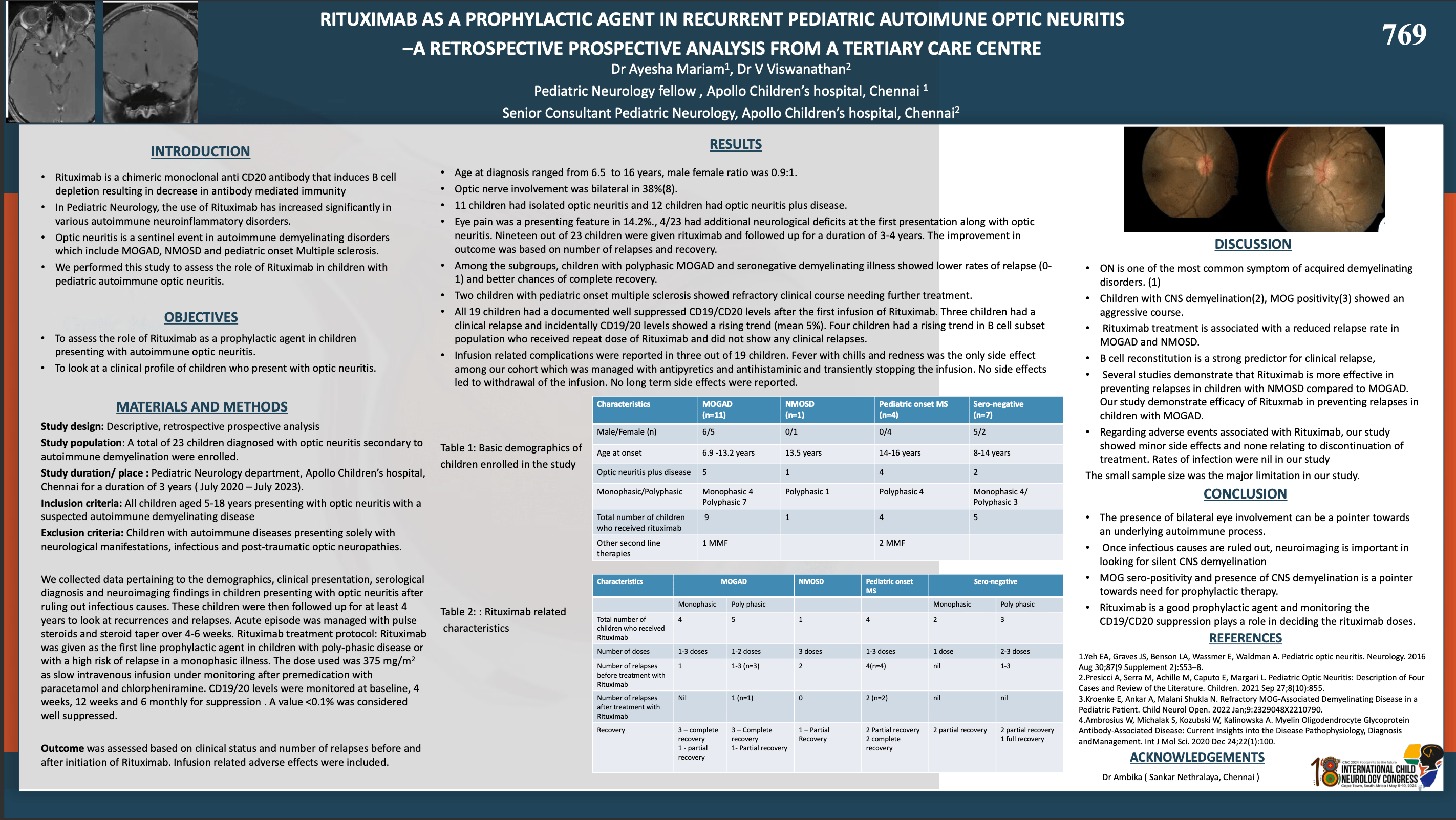Rituximab As A Prophylactic Agent In Recurrent Pediatric Autoimmune Optic Neuritis – A Retrospective Analysis From A SI
Objective: To study the role of rituximab for a role in progression and follow up in children with pediatric autoimmune optic neuritis.
Study design: Retrospective descriptive analysis over 3 years (June 2021-June 2023) in Pediatric neurology outpatient department, Apollo Children’s hospital, Chennai. Children aged 6-18 years with optic neuritis were included. We present a follow up data of 2 years duration.
Results: A total of 23 children ages ranged from 6.5 to 16 years, male female ratio was 0.9:1. 11 (52.3%) children had isolated optic neuritis, 10 (47.5%) had optic neuritis plus disease of which 60% had optic neuritis with ADEM, and 40% had multiple sclerosis. Optic nerve involvement was bilateral in 38%(8). 4/21 had additional neurological deficits at the first presentation along with optic neuritis.Serological testing revealed 42.8%(9) were seronegative, 4.7%(1) was Anti NMO antibody positive, 52.3%(11) were MOG positive.
All children received pulse methylprednisolone for duration of 3 – 5 days. Prevention of relapse with rituximab was given in 10 children with MS or MOG positive optic neuritis. Children received 1- 3 cycles of rituximab based on the CD 19/ 20 suppression. Mean follow up duration was of 1.5 years. EDSS scores improved in children treated with Rituximab. Only one relapse was seen in children who received rituximab.
CONCLUSION
• Rituximab is a good prophylactic agent and monitoring the CD19/CD20 suppression plays a role in deciding the need for further doses of Rituximab.
Ayesha Mariam
Pediatric Neurology Fellow
Pediatric Neurology
Apollo Children's hospital
Chennai, India
Viswanathan V Venkatraman
Senior consultant paediatric neurology
Pediatric neurology
Apollo Children's hospital
Chennai, India

Adam Numis
University of California, San Francisco; UCSF Benioff Children's Hospital
United States